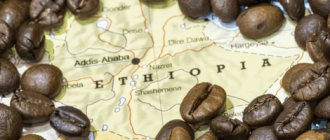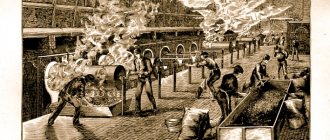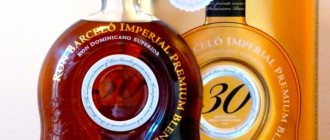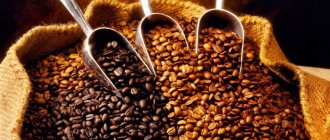Is it healthy to eat coffee beans?
There have long been mixed opinions about whether coffee is good or bad for us. The consensus at the moment seems to be that it has many positive health benefits that outweigh the negatives.
One of the main ways coffee is considered good for us is because of its high antioxidant content. Coffee is actually in a group of antioxidants called dietary phenolic compounds. These antioxidants are said to protect us from cardiovascular disease, inflammation and other nasty things.
While these antioxidants can be found in a wide variety of plant-based foods and drinks, coffee is a particularly good source. It's no surprise that whole coffee beans, undiluted, are loaded with antioxidants.
Nutritionally, 1 ounce (30 grams) of coffee beans contains about 85 calories, 13 grams of carbohydrates, and 11 grams of fiber.
The effect of grains on the oral mucosa
Is it possible to chew raw coffee beans - is it beneficial or harmful? From the point of view of the effect on the oral mucosa of special organic acids that kill pathogenic bacteria, it is possible and even necessary. Sooner or later, teeth are subject to carious destruction.
The reason for this lies not only in diet, but also in poor oral hygiene: not every person can brush their teeth well. There are hard-to-reach places that cannot be reached with a toothbrush.
Organic substances in green grains have a bactericidal effect and can delay the appearance of black spots that precede destruction. At the same time, bad breath disappears, as the processes of decay stop.
Periodontal disease - inflammation of the gums - also begins due to low resistance of the mucous membrane to pathogenic microorganisms. As a result, the hidden part of the tooth is exposed and the person begins to react painfully to hot and cold drinks and sweet dishes.
The content of vitamins and minerals allows you to restore their loss by the body. They are located in the solid substance of the grains, and during heat treatment the amount of useful chemical compounds is reduced to a minimum.
The effect of hard coffee on teeth
Chewing coffee beans is not very safe in terms of damaging tooth enamel. For healthy teeth, this will not cause harm, since the thickness of the coating is more than 1 millimeter. But if the enamel is cracked or thinned, the hard fraction can damage it even more. In this case, you need to chew raw coffee berries - they are softer in consistency.
There is evidence that caffeine leaches calcium from bone tissue. This is true if the coffee varieties consumed contain a lot of acids. Soluble granules are especially harmful in this regard, but no one is going to chew them.
To preserve teeth and bones, it is necessary to help the body neutralize acid. To do this, you should always drink water before a cup of espresso - at least 2 glasses, and your diet should contain foods rich in calcium:
- cottage cheese;
- broccoli;
- natural hard cheeses, such as Parmesan;
- almond;
- sardines;
- sesame.
Half a teaspoon of ground egg peel (not boiled) covers the body's daily need for calcium. To get the same, you need to eat more than 1 kg of cottage cheese. To improve the absorption of calcium, you need vitamin D. There is a lot of it in fish oil, but you can simply sunbathe and then it is formed in the skin.
Are there any bad side effects from eating coffee beans?
Any health benefits from coffee are enhanced by eating the beans, as are any negative effects.
If you find that brewed coffee causes heartburn or other unwanted side effects, they may get worse if you chew the coffee beans in any significant amount.
Eating too many grains can also have a laxative effect or even lead to increased cholesterol levels . Of course, if you're pregnant, breastfeeding, or have a medical condition that means you need to eliminate or limit caffeine or acidic foods/drinks, drinking coffee beans is probably not a good idea. If in doubt, consult your doctor.
Summarize
- Coffee beans are safe to drink, but should not be consumed in excess.
- Coffee beans contain antioxidants and caffeine, which can boost energy levels and reduce the risk of certain diseases. However, too much can cause unpleasant side effects. Chocolate-covered coffee beans may also contain excess calories, sugar and fat.
- However, if consumed in moderation, coffee beans can be a safe and healthy option.
Tags: Coffee
About the author: Alexander Fedorov
Candidate of Biological Sciences, biologist, nutrition expert. Graduated from Stavropol State University with a degree in Biology at the Faculty of Biology and Chemistry.
- Related Posts
- Are beans a vegetable or not?
- Hazelnuts: benefits and harm to the body
- Pine nuts: benefits and harm to the body
« Previous entry
What about caffeine content?
Perhaps the most important thing to consider when consuming coffee beans is the additional caffeine you are taking.
There have been a number of studies suggesting that caffeine may have all sorts of health benefits. These include improved memory and protection against diseases such as diabetes, Parkinson's disease and even some types of cancer.
However, while we all have different caffeine tolerances, it's important to keep in mind that the recommended safe level of caffeine for adults is around 400 mg per day (children should avoid it altogether).
This equals about four cups of brewed coffee. Typically, coffee beans can contain up to 6 mg each. So, it's worth tracking how much you eat, especially if you also drink other caffeinated drinks.
Conclusion
- You can and often even need to eat coffee beans: they sanitize the oral cavity and prevent the development of caries.
- One of the most popular ways of consumption is coffee beans in chocolate, individual dragees or bars.
- People with weak teeth and gums are not recommended to eat coffee beans, so as not to damage the enamel and teeth.
- 10-20 grains per day will not harm a healthy person. But they do contain caffeine, so be careful with the amount of coffee.
How do I know if I have too much caffeine?
We've all been there. This leads to headaches, fluctuations and mood swings. Other symptoms that indicate you've taken too much caffeine include insomnia, increased heart rate, and muscle tremors.
Consume too much (more than 500 mg per day) on a regular basis, and you could be looking at liver damage, high blood pressure, and addiction, which can lead to a withdrawal period when you stop drinking.
Again, this is worth keeping in mind if you decide to start snacking on coffee beans.
Coffee grounds - how they affect the stomach
Is it possible to eat coffee beans in the form of grounds left in the cup? It is possible if the process is enjoyable and there are no negative symptoms after it. Scientists who conducted research in this direction noticed a connection between regularly eating coffee grounds and inflammation of the appendix.
Most likely, coffee residues cause general inflammation of the intestines, which spreads to the large intestine and reaches the appendix.
The grounds contain a large amount of fiber, which slows down the digestion of food and can cause constipation. Although in some cases it is used as a laxative. It all depends on the individual tolerance of this “delicacy”.
There is little caffeine left in the grounds after brewing the drink, so its amount cannot cause negative consequences. But there are many different ballast substances, and they load the gastrointestinal tract, adversely affecting its functioning.
Can you eat coffee grounds?
Yes, coffee grounds are also suitable for use. Again in moderation. It's also good as a fertilizer and makes a great body scrub, among many other household uses!
Hopefully we've answered all your questions and even dispelled some myths about eating coffee beans. So, the next time you want to try those chocolate covered espresso beans you saw on sale at your favorite cafe, you can snack with confidence!
If you find an error, please select a piece of text and press Ctrl+Enter.
A little history of chewing coffee beans
Historians claim that people initially started by chewing grains, following the example of wild goats. The shepherds noticed that the goats, eating leaves and fruits from the coffee trees, were active and full of energy. Following them, people began to chew the grains, appreciating all the benefits of the invigorating effect.
African tribes used coffee beans as an energy boost during long marches, and to keep them full they mixed them with animal fat and rolled them into balls. The food was stored for a long time, had a pleasant taste and gave strength to overcome the deserts. Today, raw grains are no longer eaten; roasted grains, which are not only tasty, but also healthy, are another matter.
Potential Health Benefits
Although many studies have examined the benefits of coffee as a beverage, few have examined the effects of consuming whole coffee beans.
However, consuming coffee beans likely provides the same health benefits as drinking the beverage. Here are some potential health benefits of whole coffee beans.
Excellent source of antioxidants
Coffee beans contain powerful antioxidants, the most common of which is chlorogenic acid, a health-promoting polyphenol (4).
Research shows that chlorogenic acid may reduce the risk of diabetes and may fight inflammation. Some studies suggest it may also have anti-cancer properties (5, 6, 7, 8).
The amount of chlorogenic acid in coffee beans varies depending on the type of coffee bean and roasting methods (9).
In fact, roasting can cause a 50-95% loss of chlorogenic acid—though coffee beans are still considered one of the best sources of this polyphenol (10).
An easily digestible source of caffeine
Caffeine is a natural stimulant found in a variety of foods and drinks, including coffee and tea.
On average, eight coffee beans contain as much caffeine as one cup of coffee.
Your body absorbs caffeine from whole coffee beans faster than from liquid coffee (2, 3).
Caffeine affects your brain and central nervous system, which has many beneficial effects. For example, this substance may increase energy levels and alertness, improve mood, memory, and productivity (11, 12, 13).
One study found that drinking 2 cups of coffee with 200 mg of caffeine—the equivalent of about 17 coffee beans—was as effective as taking a 30-minute nap in reducing driving errors (14).
In another study, 60 mg of caffeine—about 1 espresso or 5 coffee beans—led to improvements in satisfaction, mood, and attention (15).
This all happens because caffeine suppresses the hormone adenosine, which causes drowsiness and fatigue (16).
This chemical may also improve physical performance and weight loss by improving metabolism (17, 18).
Other Potential Benefits
Observational studies suggest that coffee also has other benefits, including reducing the risk of developing the following diseases and conditions (19, 20, 21, 22, 23, 24, 25, 26):
- death from all causes
- heart disease and stroke
- certain types of cancer
- liver diseases, including non-alcoholic fatty liver disease, liver fibrosis and cirrhosis of the liver
- diabetes mellitus type 2
- brain diseases and conditions such as depression, Alzheimer's disease and Parkinson's disease
Animal and human studies also show that green coffee bean extract may lower blood pressure in people with high blood pressure (27, 28, 29).
However, keep in mind that these benefits were found in observational studies rather than strictly controlled studies. Therefore, more research is needed before firm conclusions can be drawn.
Summary:
Coffee beans are a concentrated source of antioxidants and caffeine. They have anti-inflammatory properties that protect against certain diseases and improve energy levels and mood.
Easy source of caffeine
It is known that caffeine is very good at stimulating the activity of our nervous system. On average, 8 coffee beans provide as much caffeine as one cup of coffee. However, your body will get caffeine from whole coffee beans faster than from liquid coffee.
Bill Gates: After the Covid-19 pandemic, the world may face two threats
Stylish, fast and on trend: several hairstyle ideas in five minutes
ASUS plans to release a miniature flagship phone Zenfone Mini
Caffeine affects your brain and central nervous system, which provides many benefits. For example, it can increase energy and productivity, as well as improve memory and mood.
One study found that drinking 2 cups of coffee with 200 mg of caffeine is the equivalent of about 17 coffee beans and is as effective as taking a 30-minute nap. And in another study, 60 mg of caffeine (1 cup of espresso or 5 coffee beans) led to improvements in satisfaction, mood and attention.
Caffeine works by suppressing the hormone adenosine, which causes drowsiness and fatigue. This chemical can also improve physical performance and weight loss by boosting metabolic processes.
Animal and human studies suggest that green coffee bean extract may lower blood pressure. However, keep in mind that these benefits are based on observational studies rather than rigorous and controlled studies. Therefore, more experiments are needed before firm conclusions can be drawn.
Original recipes with grain
And now - a couple of secrets on how lovers of chewing fruits can make their diet more refined.
In Apple pie order
You need to melt good, natural chocolate in a water bath. Pour coffee beans into the same container and stir. Using a fork, remove each dragee and place it on parchment. After two hours in the refrigerator, dessert can be eaten. If you pour the entire mixture into the mold, you will get a perfect tile. Bitter chocolate with the addition of a pinch of pepper and salt will make a spicy dietary treat.
Liqueur coffee&orange
You need to make 44 shallow slits in the orange and insert a grain into each. Place the fruit in a container and add 250 g of powdered sugar. Pour 500 ml of vodka on top. Keep the tincture, covered, in the refrigerator for 44 days, shaking occasionally. Before serving, the liqueur should be strained. Surely, the number 44 has a secret meaning, it is better to stick to it.
Sambuca "with flies"
The original Italians came up with their own recipe for sambuca, calling it con mosca (“with flies”). The difference from regular sambuca is the presence of three coffee beans at the bottom of the glass. The cocktail takes on a pleasant aftertaste. And “flies” should definitely be eaten, as they represent health and well-being. In any case, that's what Italian bartenders say.
—>
Some people enjoy chewing coffee beans. And they are even used in preparing culinary masterpieces. However, some of them wonder whether this is dangerous to health. Is it possible to eat grains and what effect do they have? We will also tell you about important nuances - for whom this “snack” option is useful, and for whom you should not get carried away.
- Coffee roasting process
A little history about chewing whole coffee beans
It is known that drinking coffee originally consisted of chewing coffee beans. People learned this by imitating wild goats, who really liked coffee beans. The fact is that the shepherds noticed that the goats that ate the leaves and fruits from the coffee beans were more active and cheerful. It was for the invigorating effect that people began to chew coffee beans.
This is interesting: African tribes regularly used grains as an energy boost during long transitions. And in order to get not only vigor and a surge of strength, but also not to feel hungry, they mixed coffee beans with animal fat and rolled the mass into balls. This type of food was stored for a long time, while it allowed wild African tribes to charge themselves with strength to overcome the desert.
Of course, today they no longer eat raw grains, replacing them with roasted ones, which, by the way, bring great benefits to the body.
Benefits of chewing grains
You may already know that coffee raw materials contain a large amount of essential oils, which provide portions of your favorite drink with such a bright taste and luxurious aroma. In addition to esters, the grains contain volatile substances and acids that have a beneficial effect on the oral cavity. Scientists have been able to prove that they not only freshen breath, but are also able to fight pathogenic microorganisms that live in large numbers in the human mouth.
This is useful to know: Italian scientists have found that chewing coffee beans cleanses the tongue, gums and tooth enamel, which allows a person to avoid the development of caries. The grains are also useful for the inner surface of the cheeks. Because when chewing them, a layer of pathogenic microorganisms is removed, which can lead to the development of oral candidiasis or “award” a person with a “geographical” tongue.
We can safely say that chewing coffee beans is an ideal alternative to chewing gum.
This is interesting: in small doses, coffee beans can mask and suppress the smell of alcohol. However, if you have drunk too many strong drinks, then neither coffee beans nor traditional chewing gum will save you.
Recipes for treats that include grains
Coffee beans are used not only to decorate dishes and desserts, but can also be one of the main components.
Recipe for making chocolate covered coffee beans
To prepare them, you need to melt high-quality dark chocolate with a high percentage of cocoa beans in a water bath or in the microwave. If you choose the first option, then do not forget to constantly stir the chocolate mass, and also make sure that the surface of the bottom of the bowl in which the chocolate is located does not come into contact with water. Otherwise, the chocolate will curdle and the whole process will have to start from the very beginning.
After the chocolate has completely melted, you need to pour coffee beans into the mixture. Then place them on parchment using a fork. Place the dessert in the refrigerator for several hours and serve with your favorite drinks - green tea, coffee, and so on.
If you do not want to take out each grain separately, we suggest you use the following practical solution. Pour the coffee raw materials into the melted chocolate, and then pour the whole mixture into a mold with low sides. Place the sweets in the refrigerator. After the dessert hardens, you will receive an original version of dark chocolate with crispy “nuts”.
By the way, this is an excellent option for a filling and very tasty snack. Especially if you need concentration and energy. Chocolate with coffee beans is suitable for people burdened with intellectual work, students and schoolchildren who are preparing for an exam. A piece of this energy delicacy will also find fans among fitness enthusiasts.
Attention: people who want to lose weight should not despair. This sweet option will suit them too. The main thing in this case is to use dark chocolate without additives. If desired, you can add spices and seasonings to the finished delicacy - starting with coconut flakes and ending with freshly ground black pepper. By the way, the latter option adds piquancy to the dessert. If you are struggling with extra pounds, then you should add red pepper powder. This spice is known to have fat burning properties.
Contraindications for chewing coffee beans
You should know that coffee beans are very hard. Therefore, chewing them requires a lot of force. That is why it is not recommended to chew coffee beans for people with thin tooth enamel and weak teeth.
In large quantities, coffee beans have the same effect as your favorite caffeinated drink. Therefore, those who suffer from high blood pressure or have ailments related to the functioning of the cardiovascular system should not get carried away with their use.
Sambuca Con Mosca
One of the most delicious options for preparing sambuca is considered to be the “with flies” option. This is the name given to three coffee beans that are placed in a glass of drink. First you need to drink the Italian alcoholic drink itself, and then crunch the grains.
Let's summarize and draw conclusions from the article:
- Coffee beans are very healthy, so it is recommended to eat them to prevent caries and a number of diseases affecting the oral cavity.
- Coffee beans are most often consumed as a dessert with chocolate. You can also find coffee jelly beans on sale.
- If you have weak teeth, then you should definitely avoid this snack option. After all, such a gastronomic hobby can lead to damage to tooth enamel and gums.
- The recommended dose for an adult is 10-20 grains. Don't forget that they contain caffeine, so it is recommended to avoid consuming too much coffee raw material.
Number of votes: 22
Was the information helpful? Rate and leave a comment? Better yet, share!
Comments
We will be glad if you share your opinion or add to a note or article.
—>October 2, 2020
Today we will talk to you about coffee beans and can you eat them?!
Have you ever asked yourself this question? I sometimes had such thoughts, because the coffee beans themselves look like some kind of nuts. However, it is important to know and remember that the beans themselves are incredibly hard and if you decide to try them without special roasting, then there is a high probability that you can damage your oral cavity. That's why I want to share information about coffee beans and how you can eat them!
Let's start with the first and most important thing, is it possible to eat coffee beans?
To answer this question, I propose to plunge into the past!
Maybe few people know, but coffee beans have been consumed for a long time, more than a hundred years! Accordingly, you can eat coffee beans; they have beneficial properties, which you can learn about below.
Sleep disturbance
It is known that the effects of caffeine can last up to 9.5 hours after consumption. Because of this, excessive consumption of coffee beans can cause serious problems falling asleep. In addition, excessive intake of this substance into the body is associated with other side effects:
- increased anxiety symptoms such as palpitations, nausea, and feelings of stress;
- withdrawal symptoms, including headache, restlessness, fatigue, tremors and poor concentration if you suddenly abstain from coffee;
- increased risk of pregnancy problems such as miscarriage, low birth weight and early birth.
If you experience increased anxiety and are constantly on edge, limit and completely avoid caffeine products.
How to correctly understand the 10 commandments: the tenth imposes 2 important obligations
Soft and fluffy: a pet as a psychologist for a child
The dish spoiled by the client was replaced, but the man remembered the waiter’s joke
Likewise, if you are experiencing withdrawal symptoms, try reducing your caffeine intake gradually.
Main characteristics and types of green coffee
Green coffee is raw coffee beans that have not been roasted, and therefore do not have the usual dark brown color, but a delicate olive tint. They are extracted from the fruits of the coffee tree. Using specific processing, they are freed from the berry pulp and the husks are removed.
Green coffee does not have as rich an aroma as black coffee. Its smell is more reminiscent of a tart herbal aroma. A drink made from such grains acquires a brown color and a tart, astringent, slightly sour taste.
Today there are several types of green coffee:
- natural green coffee beans;
- raw green coffee;
- roasted green coffee;
- ground green coffee powder;
- granulated instant green coffee;
- freeze-dried green coffee.
The most effective for weight loss is raw, unroasted coffee; its beans contain the largest amount of nutrients. When roasted, many of the beneficial properties of green coffee are lost. For example, roasted grains completely lack chlorogenic acid, which is so valued in this healthy drink. However, the fried version also contains quite a lot of useful substances.
The soluble granulated product is obtained by applying intense steam pressure to ground coffee powder, as a result of which a lot of its beneficial properties are lost, as the pressure changes the structure of the grain.
Freeze-dried coffee is also called freeze-dried coffee and is one of the most expensive products, since the technology used to produce it is itself quite expensive. But thanks to it, a drink is obtained that is closest in taste and aroma to the natural product.
Recipes for making coffee with chocolate
There are many recipes for making coffee with chocolate. They differ not only in the list of ingredients, but also in the temperature of the drink. Some people like hot coffee, others prefer cold coffee.
Classic chocolate coffee drink
Classic chocolate-coffee drink To prepare traditional mocha you will need:
- freshly ground coffee
- chocolate
- sugar
- milk
First you need to brew the espresso. Then you should melt the chocolate bar in a water bath, gradually pouring milk into the container. Without bringing to a boil, the mixture is removed from the heat and added to the coffee. The drink can be sweetened to taste and decorated.
Spicy
Spicy coffee with chocolate and spices This type of recipe originated in Brazil, where they like to add various spices to coffee.
The drink requires the following components:
- Arabica
- mineral water
- bitter chocolate
- sugar and salt
- cream
- cardamom and cinnamon
Coffee and spices are poured into the Turk, filled with water and placed on low heat. After a couple of minutes, foam should appear on the surface of the liquid. At this point, the Turk is quickly removed from the heat until the foam settles. This action should be repeated twice.
Having brewed the main drink, move on to the second ingredient - chocolate. It, together with the cream, is sent to a water bath. A couple of minutes will be enough to melt the chocolate. The resulting mixture is combined with hot strained espresso and sugar is added if desired.
Cold moccacino
Cold Moccacino This cocktail is perfect for cooling and relaxing in the summer heat. To prepare it take:
- ground Arabica or Robusta
- sugar
- mineral water
- cream (whipped)
- milk
- chocolate
- ice
- mint
First the espresso is prepared. Beat milk, sugar and chocolate with a mixer, gradually increasing the speed. After 3-4 minutes you should get a lush cream. Then this mass is mixed with cooled and strained coffee, ice is added, and decorated with whipped cream and mint.










